BFG GeForce 8800 GTS Review
BFG GeForce 8800 GTS
Spode takes a look at the cut-down 8800 GTX, to see what spending £150 less gets you.
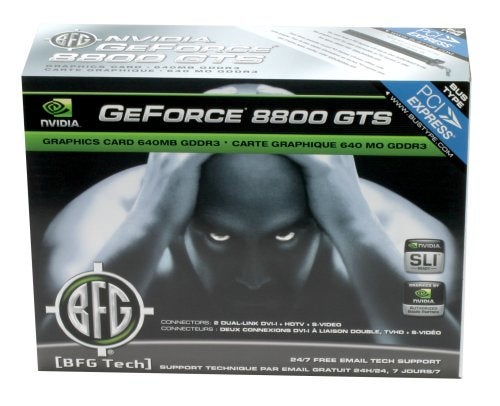
Verdict
Key Specifications
- Review Price: £299.61
Just over a month ago, I took a look at the Leadtek 8800 GTX. Obviously it’s still early days for the 8xxx series and prices haven’t dropped much in this time (£25 in fact), but it performed amazingly. As Windows Vista hasn’t hit the consumer market yet, and DirectX 10 games haven’t arrived, most people are choosing to hold off before upgrading.
However, there’s no denying that the 8xxx series is currently the fastest available, even in current DirectX 9 applications. Due to its unified shader architecture, running legacy games doesn’t create inefficiencies in rendering as it will balance the stream processors perfectly. If that whole paragraph confused you, you might want to read my, unified shader architecture 8800 GTX review first.
The GTS suffix hasn’t been seen on an nVidia card for quite some years now, and it’s nice to see it resurrected. As with most of the three letter acronyms stuck on the end of model numbers, they mean very little and don’t actually give much of an indication of expected performance. Think of them more as Jack, John and David, rather than 1st, 2nd and 3rd – especially when comparing cross brands, as the competition will often play on this and name budget cards with top-end acronyms.
In this case, going from the GTX to a GTS means a price reduction of close to £150. By moving from the GTX to the GTS, we see a drop in the number of stream processors from 128 to 96. These are also running at a slower frequency of 1.2GHz, compared to the 1.35GHz of the GTX. We also see a drop in the number of pixel output engines, from 24 to 20. This drop in pixel throughput should only really be an issue at very high resolutions.
As well as the lower frequency of the stream processors, the core runs at a slower 500MHz (compared to 575MHz) while the memory runs at 800MHz (1,600MHz effective) when compared to 900MHz (1,800MHz effective).
In practice, I expect all these little things to create quite a performance difference between the two cards – unlike previous generations. I also expect to see another card to be released to fill the gap between the two cards at a later point.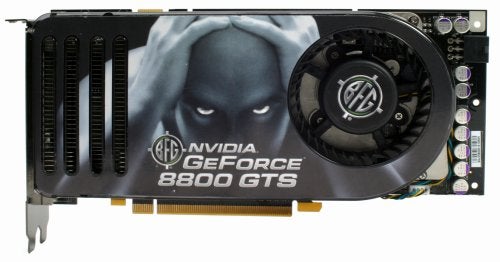
The card I’m using for testing was supplied by BFG. The artwork is somewhat reminiscent of myself when I’m struggling to hit a 5AM deadline, but wouldn’t look out of place advertising the latest perfumes – Eau De Spode anyone?
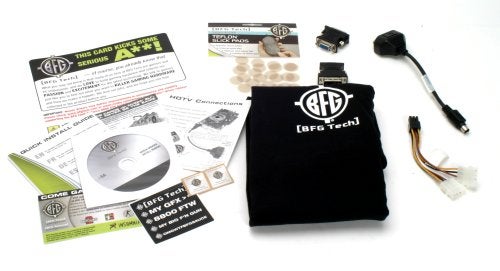
When spending nearly £300 on a graphics card, I would expect a decent bundle and BFG delivers. We have the classic XL T-Shirt, perfect for the over-fed, under-exercised geeks that walk amongst us. We also see a selection of stickers, which are tastefully done with a small BFG logo on the left hand side. My favourite is the “OMGWTFBFGSAUCE”.
We also find two DVI to D-SUB adapters for those still using analogue displays, a Molex to 6-pin PCI Express adapter and a component break-out box. Uniquely, BFG has also included Teflon patches for resurrecting sticking mice. Let’s not forget the 24/7 technical support and the lifetime warranty, which come as standard with BFG products.
So with a much more attainable price point, how does this card stack up? To find out, we used our standard selection of benchmarks in our reference Intel 975XBX “Bad Axe” motherboard, with an Intel X6800 Core 2 Duo. Coupled with 2GBs of Corsair CMX1024-6400C4 running at 800MHz with latency settings of 4-4-4-12.
The ATI Radeon X1950 XT-X and GeForce 7950 GX2 benchmarks were taken straight from my X1950 XT-X review, in which I used WHQL 6.8 Catalyst and WHQL 91.31 drivers. For the 8800 GTX, I used the 96.94 drivers and the 8800 GTS was tested using the slightly newer 97.02 drivers. The Counter-Strike portion of the testing has changed recently, so only the two 8800 cards are comparable in this benchmark.
I ran Call of Duty 2, Counter Strike: Source, Quake 4, Battlefield 2, Prey and 3DMark06. Bar 3DMark06, these all run using our in-house pre-recorded timedemos in the most intense sections of each game I could find. Each setting is run three times and the average is taken, for reproducible and accurate results. I ran each game test at 1,280 x 1,024, 1,600 x 1,200, 1,920 x 1,200 and 2,048 x 1,536 each at 0x FSAA with trilinear filtering, 2x FSAA with 4x AF and 4x FSAA with 8x AF.
On average, the 8800 GTS is 84 per cent of the speed of an 8800 GTX, which is actually faster than I was expecting. In DirectX 10 games, I expect the performance difference to be greater, but we’ll only know this when we actually test it. Either way, For £150, the GTX’s 15 per cent extra performance over the GTS doesn’t exactly ooze value for money – but what high-end card does?
Surprisingly, in many situations, the 7950 GX2 is faster – notably Call of Duty 2. So it would seem that if you are purely after DirectX 9 performance, this might not be the best card to buy. However, what swings it for the 8xxx series over the 7xxxx GeForce cards is it supports full precision HDR and FSAA simultaneously, which will make a difference in games such as Oblivion. 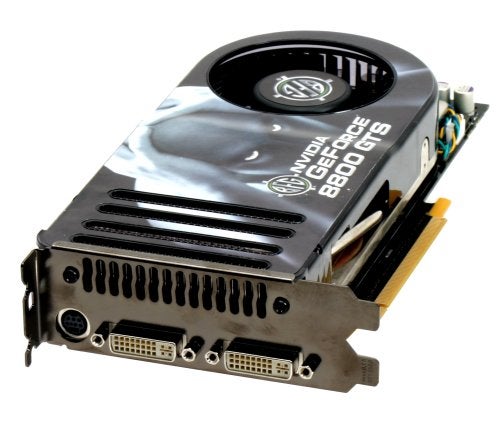
”’Verdict”’
The 7950 GX2 may be a close performer when it comes to DirectX 9 applications, but it doesn’t support full precision HDR and FSAA simultaneously. The 8800 GTS does. It also has DirectX 10 support for next years games. If you’re buying high-end right now, the 8800 GTS is definitely the card to have. The 8800 GTS is definitely the card to have. £299.61 for a card of this calibre is good value, and one should be high on your Christmas wish list.
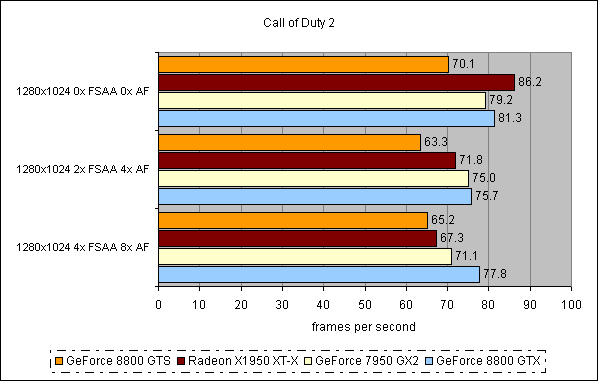
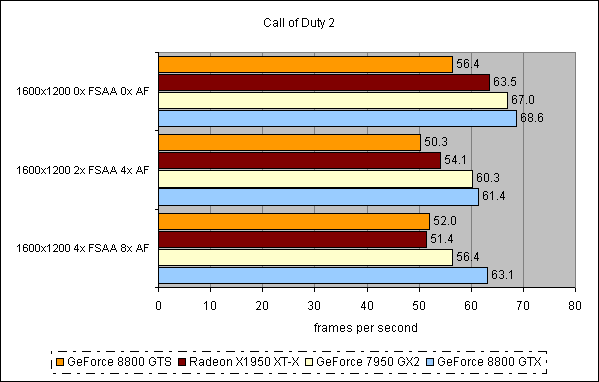
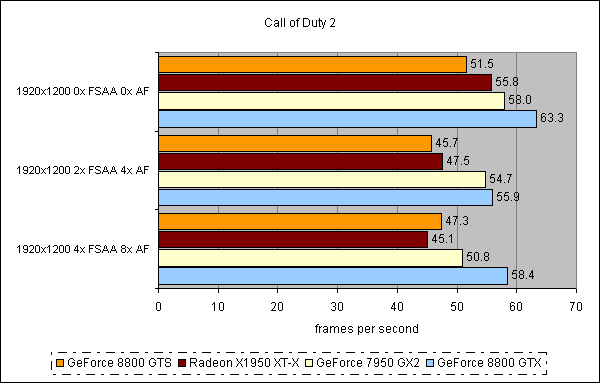
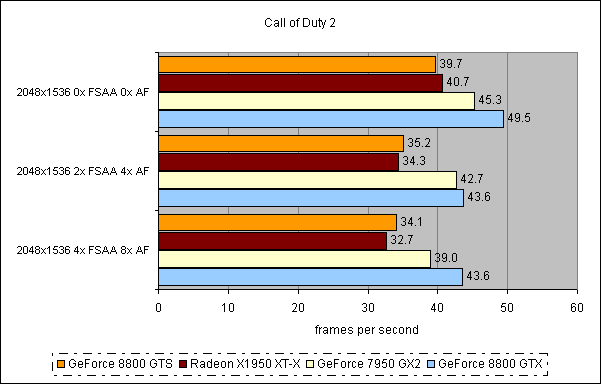
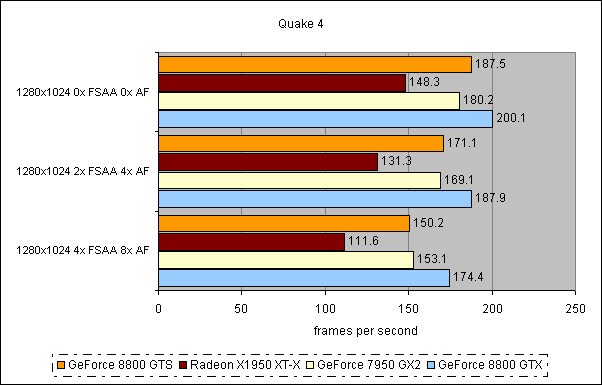
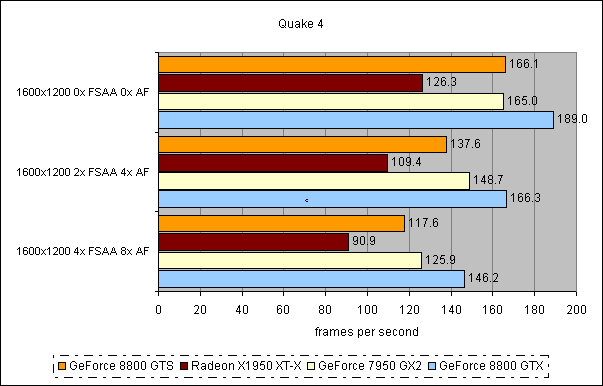
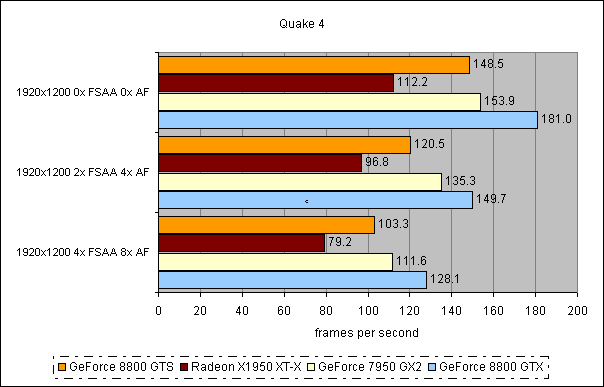
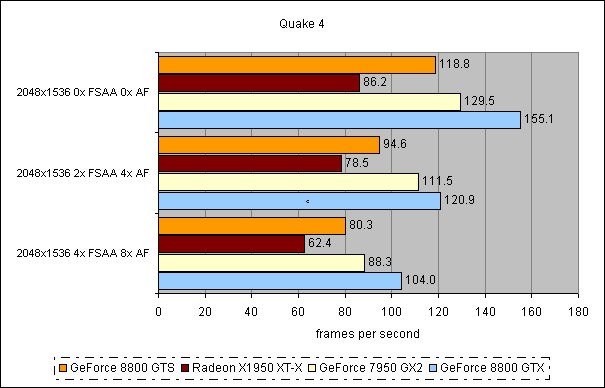
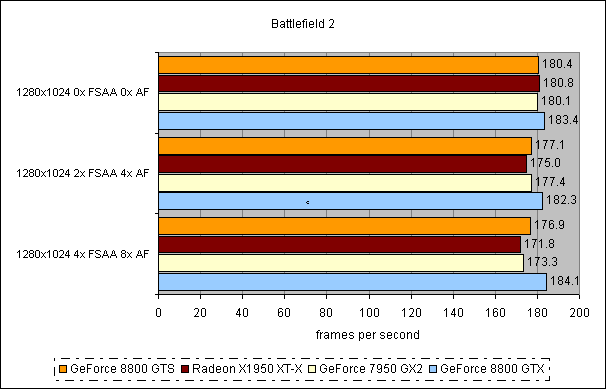
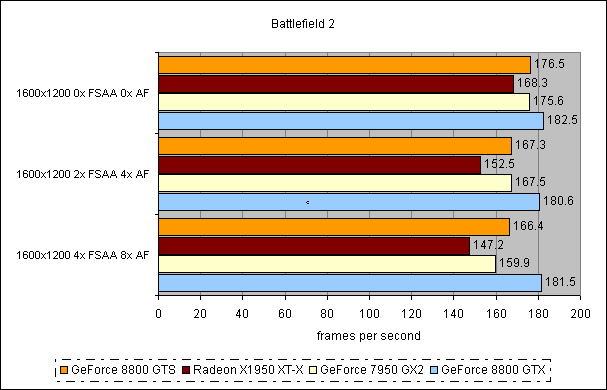
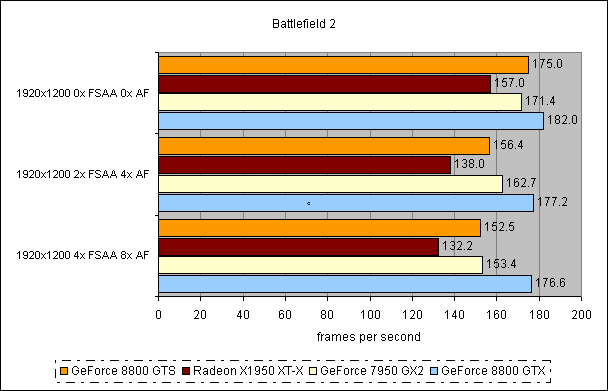
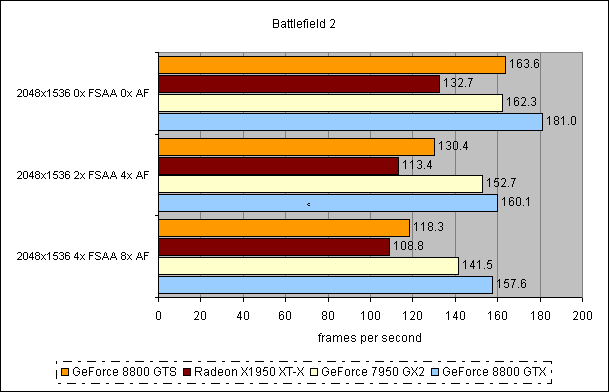
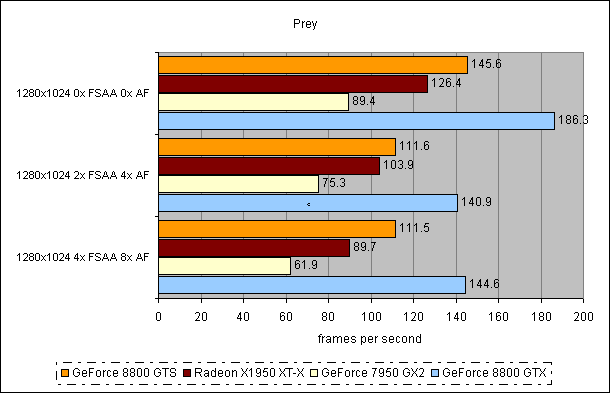
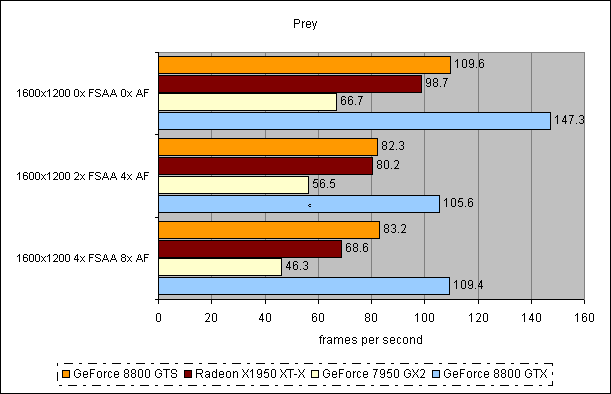
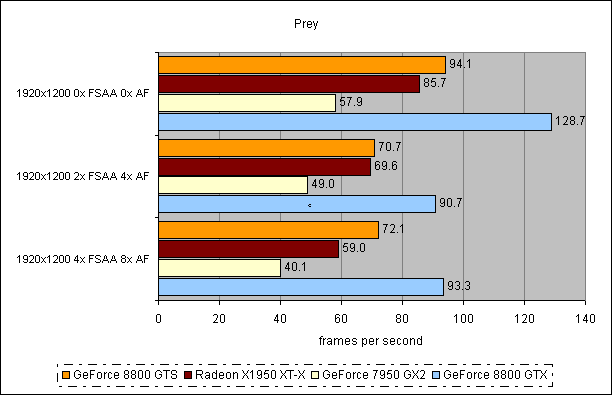
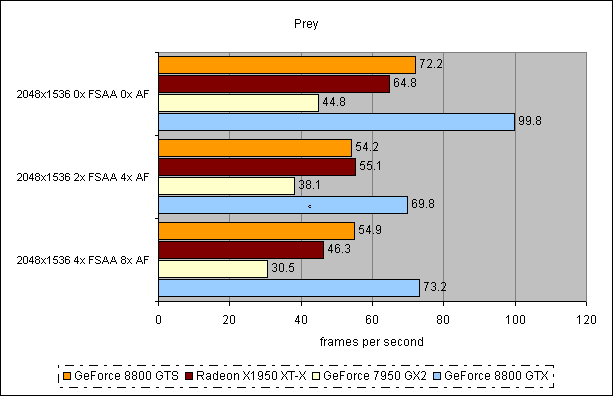
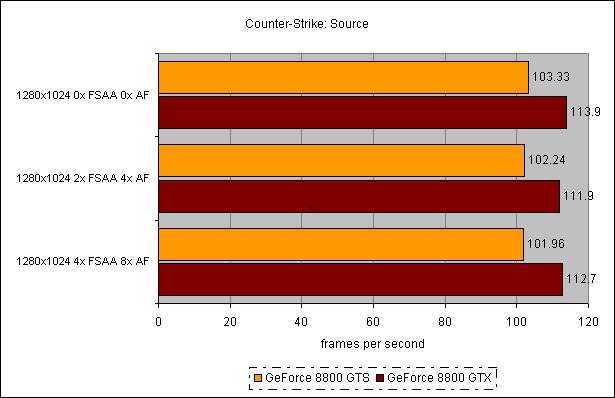
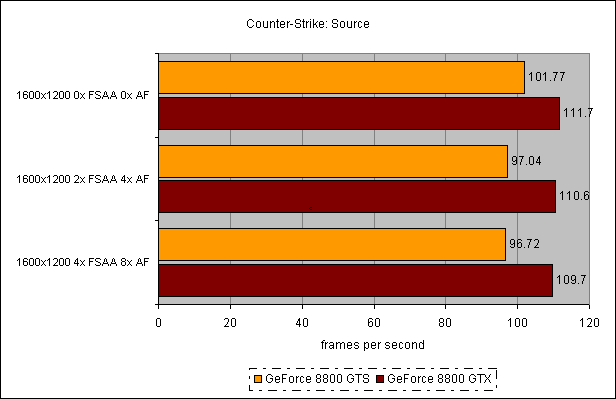
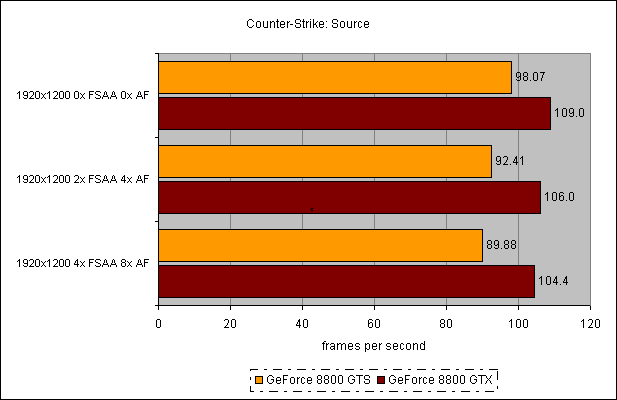
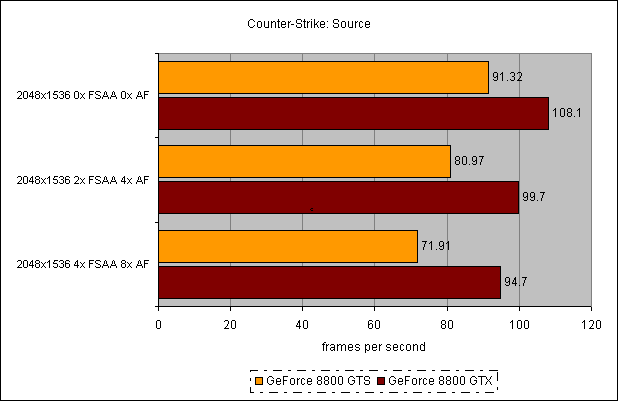
Trusted Score
Score in detail
-
Value 9
-
Features 10
-
Performance 8

